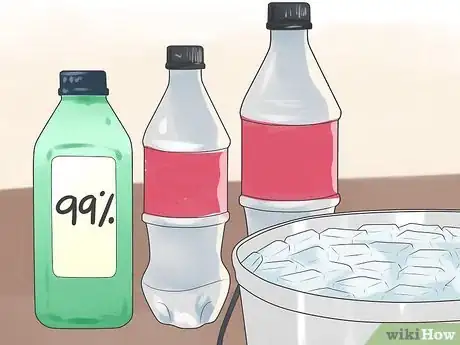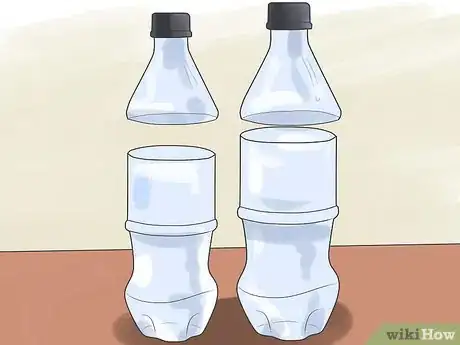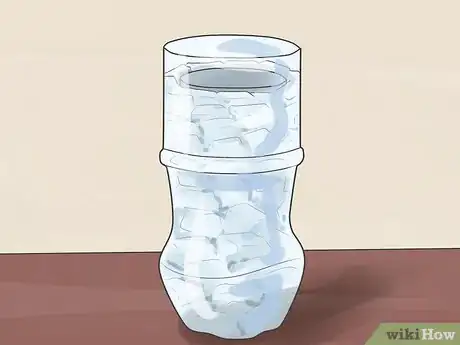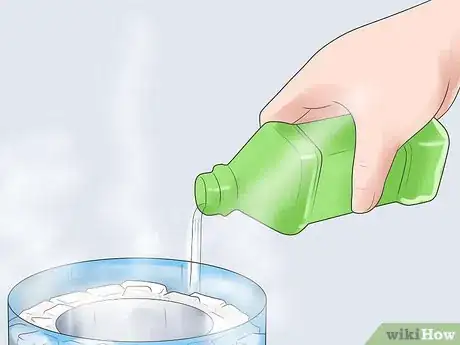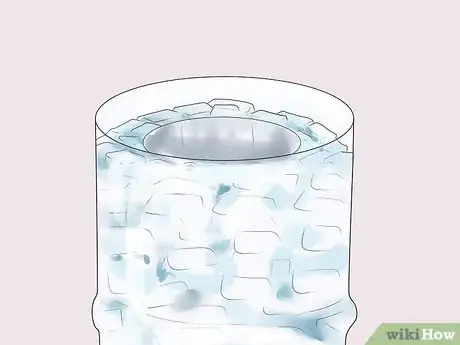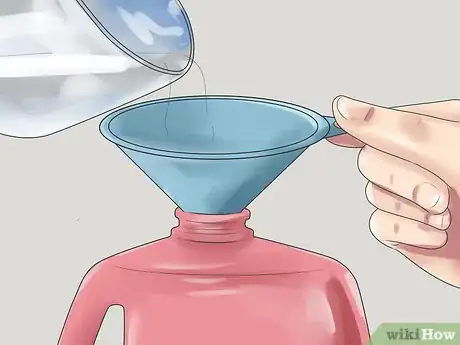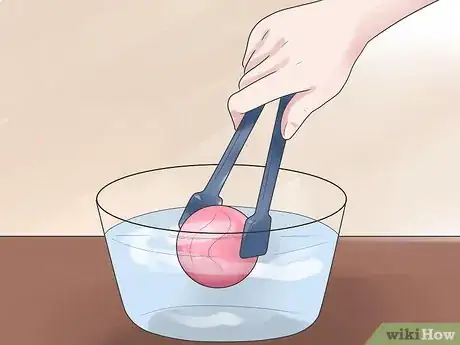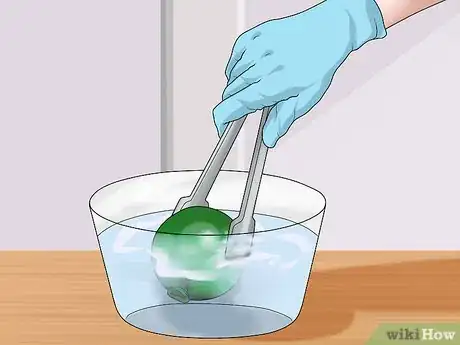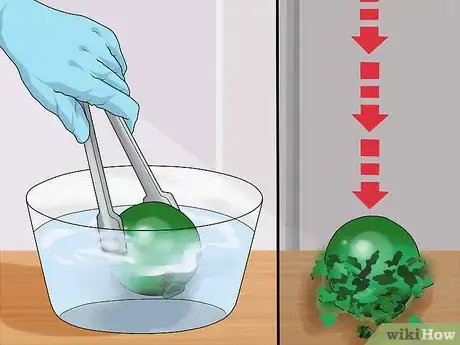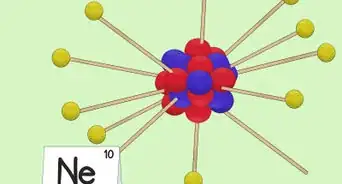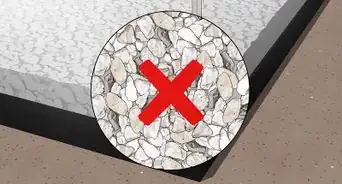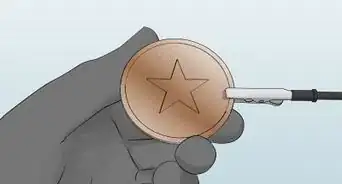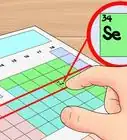wikiHow is a “wiki,” similar to Wikipedia, which means that many of our articles are co-written by multiple authors. To create this article, 14 people, some anonymous, worked to edit and improve it over time.
wikiHow marks an article as reader-approved once it receives enough positive feedback. In this case, several readers have written to tell us that this article was helpful to them, earning it our reader-approved status.
This article has been viewed 121,331 times.
Learn more...
Have you ever wanted to do experiments using homemade liquid nitrogen? There's some good news and some bad news. Unfortunately, you can't actually create liquid nitrogen using simple household items. The good news is that you can create a cryogenic-temperature alcohol, specifically isopropyl alcohol, that can mimic some aspects of liquid nitrogen, mainly its ability to reach very cold temperatures. Cryogenic-temperature alcohol can reach -110F (while liquid nitrogen reaches -320F).[1] If you have a few cold temperature experiments in mind, cryogenic-temperature alcohol might be perfect.
Steps
Making the Cryogenic-Temperature Alcohol
-
1Dress appropriately. Wear long pants, a long-sleeve shirt, and sturdy work gloves. You should also wear protective goggles and consider tying back your hair if it's long. While this may seem excessive, cryogenic-temperature alcohol is highly flammable, can cause dizziness and irritate your skin.[2]
- Your workspace should be free from food and drink. It should also be well ventilated and away from hot surfaces or open flame.[3]
-
2Gather your supplies. You'll need a 2 liter (0.5 US gal) soda bottle, a smaller plastic bottle (such as a smaller soda bottle) that can fit inside the larger soda bottle, scissors, 99% isopropyl alcohol, and pellets of dry ice.
- Both bottles should be empty, clean, and dry. If you remove the labels, you'll be able to watch the creation of cryogenic-temperature alcohol.
Advertisement -
3Prepare your bottles. Use a pair of sharp scissors to cut approximately 3 inches (7.62 centimeters) off the top of both bottles. Recycle or discard the tops.
- Make sure the smaller bottle can easily fit in the larger bottle.
-
4Nest your bottles. First, you'll want to use scissors to poke holes around the bottom and lower sides of the small bottle. Then, set it inside the larger one.
-
5Add the dry ice pellets. Evenly distribute them along the inside of the 2 liter (0.5 US gal) bottle while you hold the smaller empty bottle in the center. This will keep it level.[4]
- If you don't have pellets, you can chip your own dry ice. Just be careful using a knife and chip the dry ice into 1/2" chunks.
- Always wear gloves when handling dry ice, as it can cause injure bare skin.
-
6Pour in the isopropyl alcohol about 2" deep. Slowly pour the alcohol directly over the dry ice pellets. You may want to gradually turn the bottle as you pour, since the dry ice will start fogging, making it difficult to see.
- If you use a lower percentage isopropyl alcohol, it will freeze in a thick gel.[5]
- Remember to avoid touching the cryogenic-temperature alcohol, which will stick to your hands.
-
7Wait till the liquid stops bubbling. Once the dry ice has stopped fogging, you should be able to see that your smaller bottle now has several inches of the clear cryogenic-temperature alcohol in it. You can now begin using it in experiments.
- Your liquid is now at its lowest temperature. Use extreme care when handling.
-
8Pour the liquid nitrogen into a sturdy container and label it appropriately. It can be kept at room temperature for future use for up to 30 days. Then, discard the isopropyl alcohol according to local regulations.
- Do not inhale, touch with bare skin, or consume the cryogenic-temperature alcohol. If it gets in your eyes or on your skin, rinse repeatedly with water. If inhaled, move to fresh air and rest. Call a poison control center if you feel unwell.[6]
Using Your Cryogenic-Temperature Alcohol
-
1Try freezing items. This is a simple experiment. Use tongs to dip items into the cryogenic-temperature alcohol until they become hard. Remove the items and shatter them, if you like.
- Flowers, leaves, fruits, vegetables, and small rubber balls are just a few of the things you can freeze and shatter using cryogenic-temperature alcohol. Do not eat them and remember to wear gloves when handling.
-
2Dip a small balloon to make "liquid air." Use a small balloon that you can nearly fit into your container of cryogenic-temperature alcohol. While wearing gloves, dip most of the balloon into the liquid. The balloon will start to shrink and you should notice liquid inside the balloon.[7]
- To return the "liquid air" inside the balloon back into a gas, simply place your balloon in a warm area and wait for the particles to move faster and expand.
-
3Shatter a ball. Roll modeling clay into a ball and dip it into the cryogenic-temperature alcohol. Drop it on the floor or another hard surface and watch it shatter.[8]
-
4Research potential experiments. If you've found an experiment that uses liquid nitrogen, consider whether or not it will work with cryogenic-temperature alcohol. While the liquid nitrogen creates nitrogen gas, the cryogenic-temperature alcohol does not. Choose experiments that simply use the liquid nitrogen for its temperature-lowering aspect.
- Never eat any experiments that you've done with food and cryogenic-temperature alcohol.
Community Q&A
-
QuestionWhere can I get 99% pure isopropyl alcohol?
 Community AnswerYour local pharmacy. If they don't carry any for whatever reason, you can use 91% or 70% alcohol, but it won't be as efficient.
Community AnswerYour local pharmacy. If they don't carry any for whatever reason, you can use 91% or 70% alcohol, but it won't be as efficient. -
QuestionHow do I make dry ice?
 Community AnswerGet a tank of carbon-dioxide (CO2) and a burlap sack. Turn the tank upside down and cover the valve with the sack. As you open the valve, the CO2 will collect on the sack surface, forming dry ice.
Community AnswerGet a tank of carbon-dioxide (CO2) and a burlap sack. Turn the tank upside down and cover the valve with the sack. As you open the valve, the CO2 will collect on the sack surface, forming dry ice. -
QuestionCan I remove a mole with this?
 Community AnswerYou should never try to remove a mole using something like this. You could injure yourself. Instead, see a doctor or use one of the safer at-home methods for mole removal. There are some articles on wikiHow that can help you, like How to Remove Moles Without Surgery.
Community AnswerYou should never try to remove a mole using something like this. You could injure yourself. Instead, see a doctor or use one of the safer at-home methods for mole removal. There are some articles on wikiHow that can help you, like How to Remove Moles Without Surgery.
Warnings
- Keep the cryogenic-temperature alcohol out of the reach of children. It should be stored away from open flame or a heat source and disposed of properly, according to local regulations.[9]⧼thumbs_response⧽
- Do not inhale, touch with bare skin, or consume the cryogenic-temperature alcohol. If it gets in your eyes or on your skin, rinse repeatedly with water. If inhaled, move to fresh air and rest. Call a poison control center if you feel unwell.⧼thumbs_response⧽
- While you can use cryogenic-temperature alcohol in place of liquid nitrogen in several experiments, be aware that the cryogenic-temperature alcohol does not produce nitrogen gas, which may be required for some experiments.⧼thumbs_response⧽
Things You'll Need
- 2 liter (0.5 US gal) soda bottle
- 500 milliliter soda bottle
- Scissors
- Dry ice pellets or small chunks
- 99% Isopropyl alcohol
- eye protection
References
- ↑ http://amasci.com/amateur/liquid_n2.html
- ↑ http://nj.gov/health/eoh/rtkweb/documents/fs/1076.pdf
- ↑ https://www.airgas.com/msds/001105.pdf
- ↑ http://amasci.com/amateur/liquid_n2.html
- ↑ http://amasci.com/amateur/liquid_n2.html
- ↑ https://www.airgas.com/msds/001105.pdf
- ↑ http://education.jlab.org/frost/balloon.html
- ↑ http://members.mrtc.com/anvk/cryogenics/cryogenics.html
- ↑ https://www.airgas.com/msds/001105.pdf
About This Article
If you want to make a liquid nitrogen substitute, you’ll need 99% isopropyl alcohol, a 2-liter bottle, a smaller bottle, and pellets of dry ice. Cut the tops off both bottles, poke holes in the bottom of the smaller bottle, then put the smaller bottle inside the larger one. Pour the dry ice into the larger bottle, then add around 2 inches of the isopropyl alcohol on top of the dry ice. Once the fog dissipates, you’ll notice several inches of cryogenic-temperature alcohol in the smaller bottle. For some examples of cold-temperature experiments you can use your cryogenic-temperature alcohol for, keep reading!

